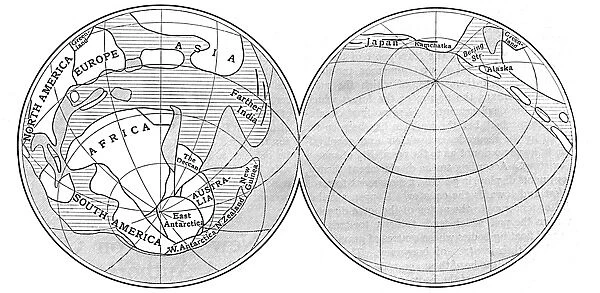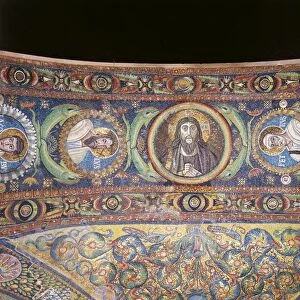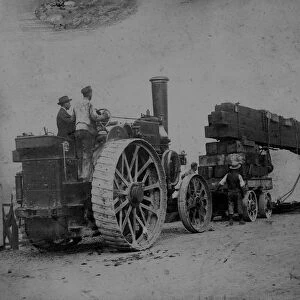Home > Universal Images Group (UIG) > History > Science
Diagram of the Earth during Carboniferous period. Land - unshaded: Deep sea - diagonal lines
![]()

Wall Art and Photo Gifts from Universal Images Group (UIG)
Diagram of the Earth during Carboniferous period. Land - unshaded: Deep sea - diagonal lines
Diagram of the Earth during Carboniferous period. Land - unshaded: Deep sea - diagonal lines: Shallow water - horizontal lines. From an article by Alfred Wegener (1880-1930) on his theory of Continental Drift (Wegener Hypothesis: 1915) published in Discovery, London, 1922
Universal Images Group (UIG) manages distribution for many leading specialist agencies worldwide
Media ID 9788391
© Universal History Archive/Universal Images Group
1915 1922 Alfred Article Carboniferous Continental Deep Diagonal Diagram Discovery Drift Earth Geophysics Land Lines Period Published Science Shallow Theory Hypothesis Wegener
FEATURES IN THESE COLLECTIONS
> Arts
> Artists
> D
> Alfred
> Related Images
> Europe
> United Kingdom
> England
> London
> Related Images
> Universal Images Group (UIG)
> History
> Science
EDITORS COMMENTS
This print showcases a detailed diagram of the Earth during the Carboniferous period, providing us with a glimpse into our planet's ancient past. The image is divided into distinct sections, each represented by unique patterns. Unshaded areas depict vast stretches of land, giving us an idea of how continents were positioned during this era. Diagonal lines symbolize deep sea regions, reminding us of the immense and mysterious depths that lay beneath the surface. The presence of horizontal lines signifies shallow waters, highlighting the intricate balance between land and sea during this period. This fascinating illustration was originally featured in an article written by Alfred Wegener (1880-1930), who introduced his groundbreaking theory on Continental Drift in 1915. Published in Discovery magazine in London back in 1922, Wegener's hypothesis revolutionized our understanding of geophysics and reshaped scientific discourse. As we gaze upon this remarkable visual representation from over a century ago, we are reminded of humanity's insatiable curiosity about our planet's history and its ever-changing nature. It serves as a testament to both scientific progress and human ingenuity as we continue to unravel the mysteries that lie within our Earth's geological past.
MADE IN THE USA
Safe Shipping with 30 Day Money Back Guarantee
FREE PERSONALISATION*
We are proud to offer a range of customisation features including Personalised Captions, Color Filters and Picture Zoom Tools
FREE COLORIZATION SERVICE
You can choose advanced AI Colorization for this picture at no extra charge!
SECURE PAYMENTS
We happily accept a wide range of payment options so you can pay for the things you need in the way that is most convenient for you
* Options may vary by product and licensing agreement. Zoomed Pictures can be adjusted in the Cart.







